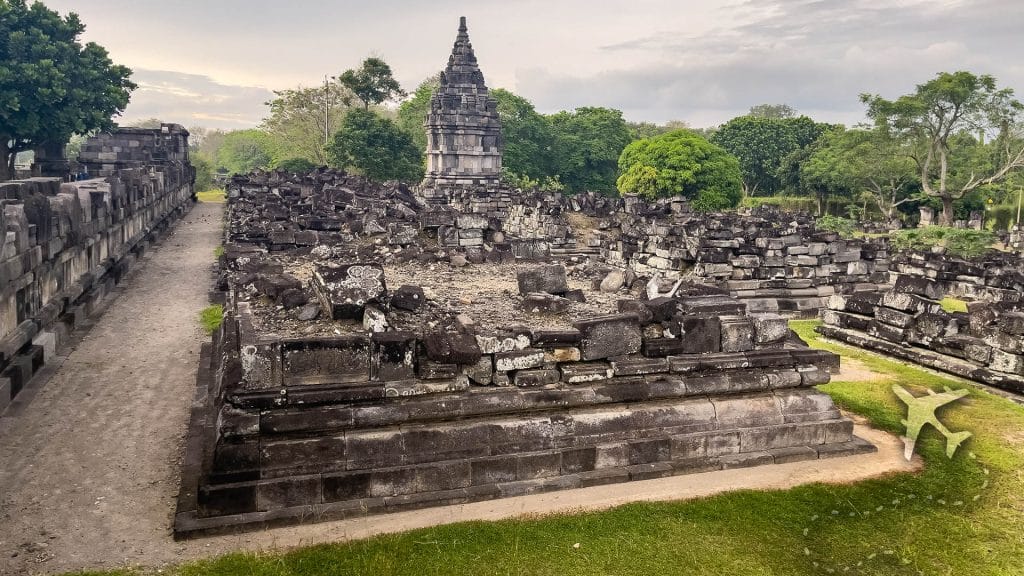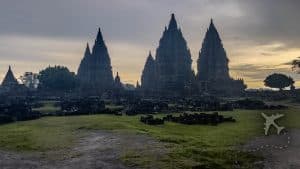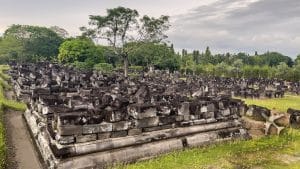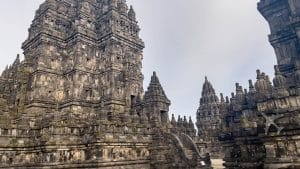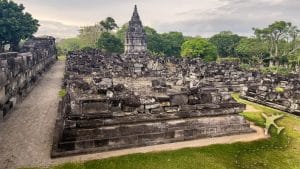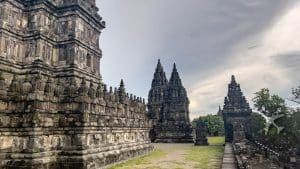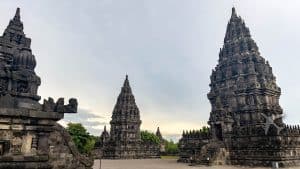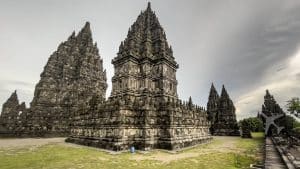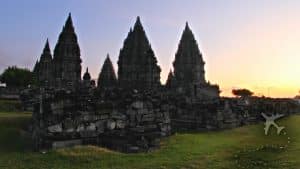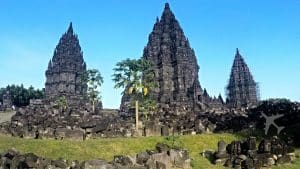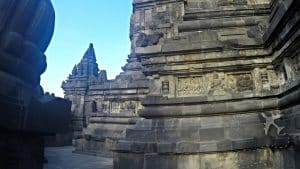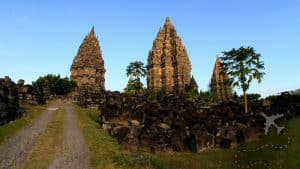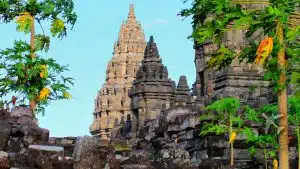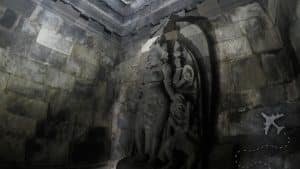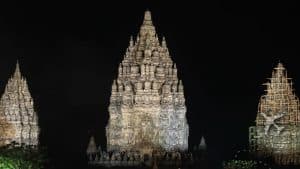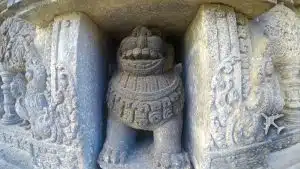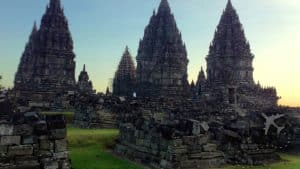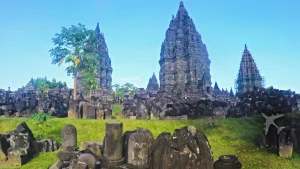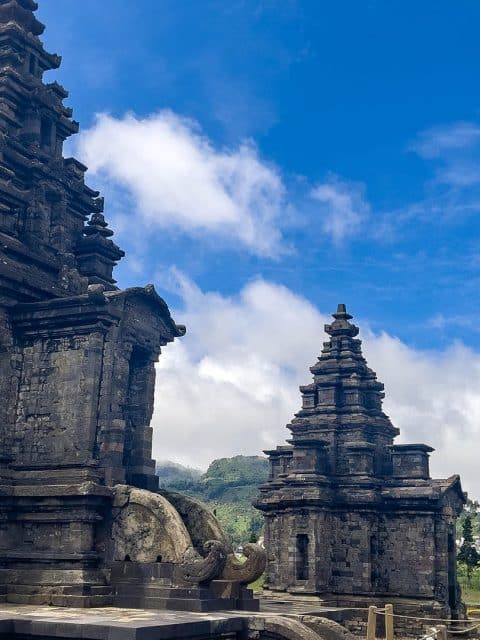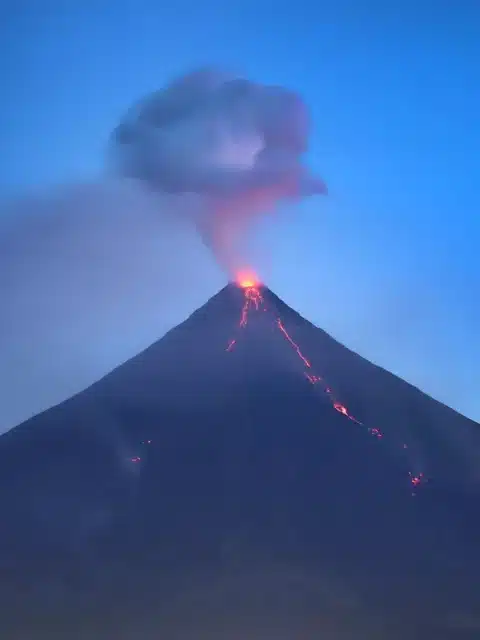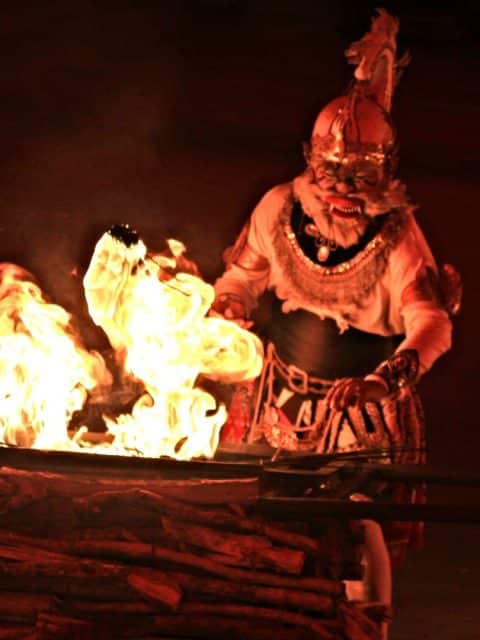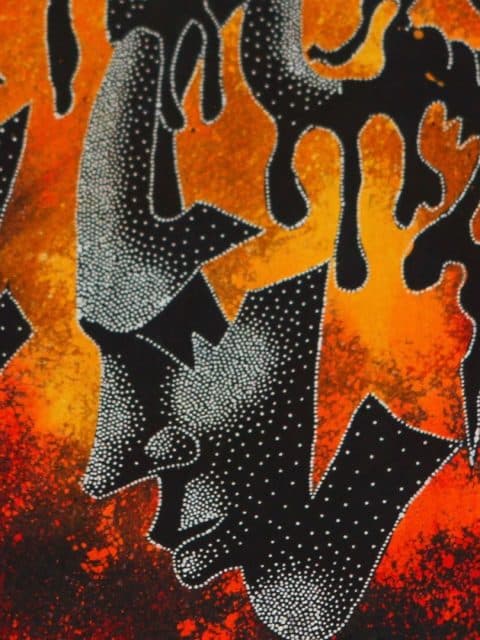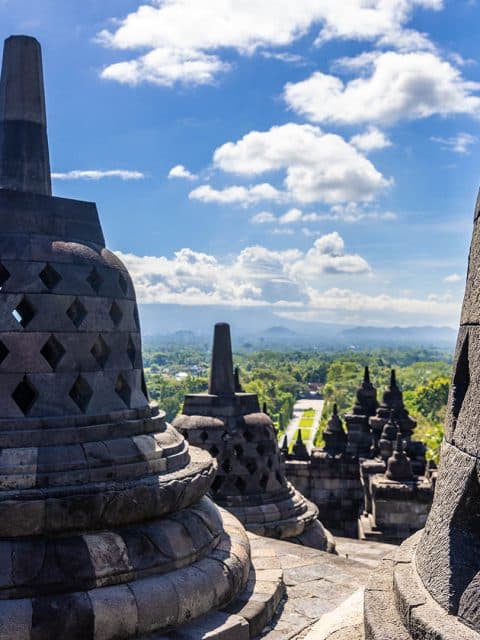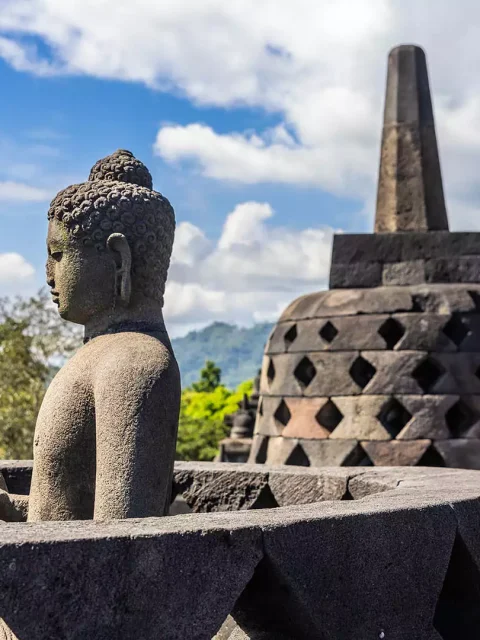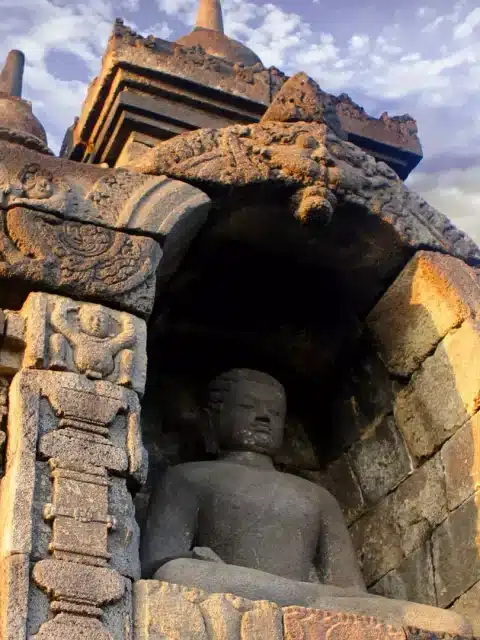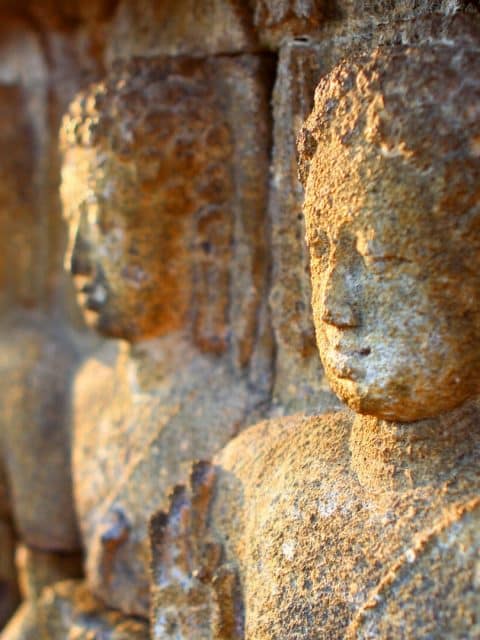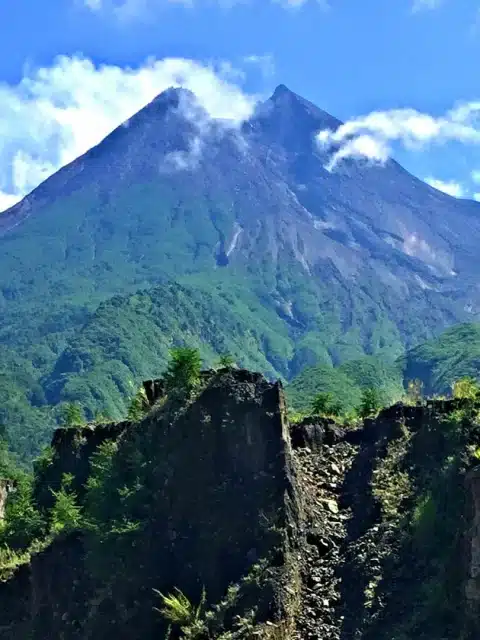Discover Indonesia’s cultural gem: Prambanan Temple
Explore the stunning cultural heritage of Indonesia and marvel at the breathtaking Prambanan temple complex – a must-visit destination for all history and architecture enthusiasts!
Prambanan Temple is a stunning 9th-century in Yogyakarta; the amazingly detailed Hindu temple is one of Indonesia’s top cultural attractions.
The complex consists of the following:
- Three Trimurti temples (Main temples dedicated to Vishnu, Shiva, and Brahma)
- Three Vahana temples (Temples in front of Trimurti temples dedicated to the vahana of each of the gods; Garuda, Nandi, and Hamsa)
- Two Apit temples (Located between the rows of Trimurti and Vahana temples on the north and south side)
- Four Kelir temples (Small shrines located in four cardinal directions right beyond the four main gates of the inner zone
- Four Patok temples (Small shrines located on four corners of the inner zone)
- 224 Pervara temples (hundreds of temples arranged in 4 concentric square rows)
Originally 240 stone temples were constructed; sadly, only 18 survive today. The 2006 earthquake severely damaged the temple, which caused its closing and many weeks of repairs before it could be reopened.
The future of this fantastic temple complex is uncertain due to the number, frequency, and severity of earthquakes in the region. These earthquakes are the result of the movement of magma (molten-hot-lava-death) under the earth’s surface from Merapi or the friction (and subsequent release) of the Indo-Australian tectonic plate subducting under the Eurasian plate (yay, geology!). In non-nerd terms, Prambanan couldn’t have been built in a worse place – earth’s natural forces will (eventually) destroy it; it’s not a matter of if, but when.
Through the viewfinder
Prambanan Uncensored
The Hindu temple architecture can only be described as remarkably gorgeous. Comparing Prambanan Temple to Borobudur Temple, I think Prambanan wins because of its dramatic appearance. The temples and shrines that are left are breathtaking.
Interestingly, locla visitors outnumber foreigners 8:1; however, visiting Prambanan is very easy from Yogyakarta. A quick 15-minute car ride takes you to the temple’s entrance, where crowds of visitors and long queues are the start of your journey. Prambanan is a popular destination with many places to explore on the Temple grounds. After a long day exploring the badassery, watching the sunset cast long shadows and warm orange light on the back of the temples is humbling.

The temple closes at sunset and they don’t like working overtime and they’re pretty forceful about kicking everyone out as quickly as possible.
Frequently Asked Questions
Yes! The Prambanan Temple complex is an expansive area with numerous temples and shrines you can visit. The architecture is breathtaking and definitely worth a visit.
Both Borobudur and Prambanan are stunning temples located in close proximity. If you’re visiting Yogyakarta, visiting both temples can be easily accomplished in one day.
Prambanan Temple is a Hindu temple.
Everything you need to know before you visit Prambanan
CURRENT WEATHER
scattered clouds
AIR QUALITY
Moderate
GPS COORDINATIONS
-7.7520, 110.4915
HIGH SEASON (MOST EXPENSIVE)
May – August
LOW SEASON (LEAST EXPENSIVE)
September – April


